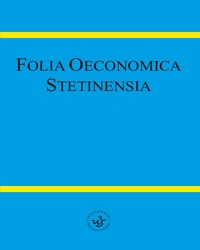Analysis of Household Income in Poland Based on the Zenga Distribution and Selected Income Inequality Measure
Analysis of Household Income in Poland Based on the Zenga Distribution and Selected Income Inequality Measure
Author(s): Kamila TrzcińskaSubject(s): National Economy, Micro-Economics, Methodology and research technology, Socio-Economic Research
Published by: Wydawnictwo Naukowe Uniwersytetu Szczecińskiego
Keywords: income distribution; Zenga distribution; the Gini income inequality index; the Zenga income inequality index;
Summary/Abstract: Research background: A lot of research has been directed at describing empirical distributions by using a theoretical model. In the literature there are proposals for various types of mathematical functions. In 2010 Zenga proposed a new three-parameter model for economic size distribution which possesses interesting statistical properties which can be used to model income, wealth and financial variables. Purpose: The aim of this paper is to apply the Zenga model to income distributions in Poland by voivodeship. Research methodology: The basis for the calculations presented in the paper has been based on the individual data coming from a random sample obtained within a Household Budget Survey conducted by the central Statistical Office in the year 2014. The parameters estimates of the Zenga distribution were obtained by means of the D’Addario’s invariants methods, mainly with the Pietra index. Results: The results of the conducted approximations, presented in the paper confirmed the good consistency of the Zenga distribution with the empirical income distribution in Poland, both in total and for households. Novelty: The study contributed to the application of a new three-parameter income distribution model to describe income distributions in Poland.
Journal: Folia Oeconomica Stetinensia
- Issue Year: 20/2020
- Issue No: 1
- Page Range: 421-436
- Page Count: 16
- Language: English

